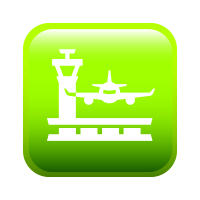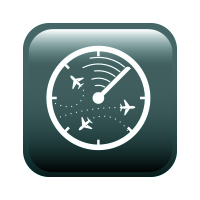Preparing for Advanced Air Mobility – What can you do now?

The aviation industry has always been at the forefront of technological advancements. In recent years, breakthrough innovations have reshaped the aviation landscape, promising safer, more efficient, and sustainable air travel. Advanced Air Mobility (AAM) is an air transportation system that uses advanced technology to transport people and property by air. AAM aircraft offer the possibility of being traditionally piloted, remotely piloted, autonomous, and have vertical take-off and landing capabilities. These aircraft are electric and are often referred to as an air taxi or electric Vertical Takeoff and Landing (eVTOL) aircraft.
The AAM concept integrates new aircraft designs and flight technologies into existing airspace operations. The goal of AAM is to move people and cargo between places that are not currently or easily served by existing aviation modes. Some potential benefits of AAM include easier access for travelers between communities, rapid package delivery, reduced commute times, disaster relief, lower GHG emissions, and reduced noise pollution.
This Insights article highlights five things you can do now to prepare for Advanced Air Mobility:

Understanding electricity/utility locations and capacities:
Before embracing AAM and incorporating vertiports, it is crucial for airports to thoroughly understand the existing electricity and utility infrastructure. This entails assessing power supply locations, capacities, and reliability to ensure they can handle the increased demands of charging and servicing eVTOL aircraft. Collaborating with utility providers will be essential to bolster the necessary infrastructure and avoid any potential power limitations. AAM may require a significant amount of electricity to operate, approximately 4 megawatts (mw) per one hundred operations depending on aircraft size and type. Airports can conduct a gap analysis to determine where they stand and work with their local utility providers to understand and integrate improvements already underway.

Potential locations and land use considerations:
Selecting suitable locations for Advanced Air Mobility operations is a pivotal step in preparing for AAM. Airport sponsors need to identify spaces that can accommodate the infrastructure and operations of eVTOL aircraft while minimizing environmental impacts and ensuring efficient access. Land use considerations should include assessing airspace restrictions, noise pollution, and zoning regulations and use of the area (aeronautical v. non aeronautical). Vertiports, which are the ground-based infrastructure for AAM aircraft, will need to be in strategic locations. These locations should consider factors such as population density, proximity to other transportation hubs, and available land. A great resource in the development of vertiports is Engineering Brief No. 105, Vertiport Design, 21 September 2022.

Operational considerations by types of aircraft and activity:
Preparing airports for Advanced Air Mobility requires understanding the diverse types of eVTOL aircraft and their operational needs, and how those may integrate with your airport’s current fleet mix of aircraft. An airport would need to assess which markets they best serve. There is a diversity of use cases for eVTOL aircraft and diversity in types of eVTOL aircraft, no matter which use case your airport supports they should be separated from current operational segments. Airports should develop protocols for landing, charging, and passenger handling that cater to the specific characteristics of each aircraft model and their intended use. Location at the airport will be important to the various activities eVTOL aircraft may provide, such as cargo transportation, emergency services, and urban air taxis. Airport sponsors should tailor operational procedures accordingly. Strong consideration should be given to segregating current operations and AAM operations. A current example of this in current day Master planning is limiting the co-mingling of uses like small flight training aircraft and large cargo transports. Airports will need to understand the operational requirements of all types of aircraft and how to integrate AAM aircraft to accommodate them safely and efficiently.

Understand other initiatives in the region:
To stay ahead in the Advanced Air Mobility race, airports must be aware of other initiatives in the region. Collaborating and sharing knowledge with neighboring airports, cities, and transportation agencies can foster a comprehensive AAM network. By aligning efforts and promoting standardized approaches, airports can create a seamless regional ecosystem that maximizes the benefits of this modern technology while minimizing potential conflicts and inefficiencies. There are several other initiatives underway to develop AAM in different regions as well as within different academic institutions. Airports should understand these initiatives to coordinate their own efforts and avoid duplication of work. This will also help to ensure that AAM operations are seamlessly integrated across different regions.

Engage and inform local, state, and federal political delegations.
Engaging and informing political delegations at the local, state, and federal levels is a crucial advocacy effort in embracing Advanced Air Mobility and vertiport development. Airport sponsors must highlight the benefits and challenges of AAM, such as reduced congestion, increased efficiency, and decreased environmental impact; to gain support and secure funding for necessary infrastructure upgrades. By involving political representatives early on, airports can foster a collaborative environment and expedite the regulatory processes that will pave the way for a successful and widespread implementation of Advanced Air Mobility. This will also help to build political support for AAM and ensure that it is integrated into broader transportation planning efforts.
In conclusion, the winds of technological change in the aviation industry present both unprecedented challenges and boundless opportunities for airports. By leveraging the collective experience of trusted consultants and adhering to industry guidance, airports can rise to the occasion, embrace this innovative technology, and soar to new heights of excellence. Through meticulous preparation and expert planning airports can be ready for the promise of enhanced sustainability, safety, and passenger experience that will drive the industry forward. Collaboration between regulators, airport sponsors, and technology providers is essential for a successful transition to the aviation of tomorrow.
For more information, please contact: Marc Champigny, Kelly Moulton or Kim Fabend